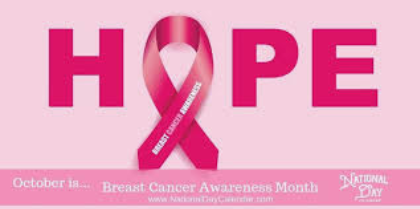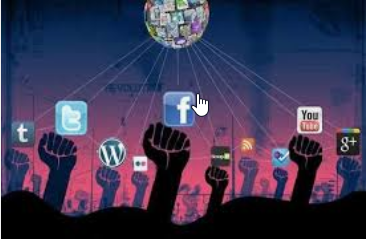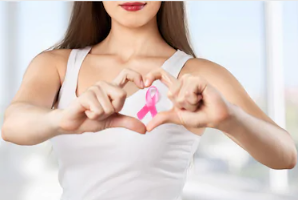
Doing the Right Thing
 In general, humans do not like to see other humans succumbing to a disease, like cancer. Unlike world hunger, which can be resolved with the right amount of resources and environmental changes, there is no real cure for those suffering from cancer. Usually, body cells grow old or become damaged, die, and then new cells replace them. However, cancer develops when old, abnormal, or damaged cells survive, divide, and form growths called tumors, except diseases of the blood. These malignant tumors invade and destroy nearby tissues and can create severe pain or loss of life if there is no early treatment. Since there is no cure for this abnormal condition, people around the world established various organizations to make everyone aware of cancer and provide support to cancer patients. On the internet, social media sites, such as Facebook, started a cyberactivism, which is a form of social media mobilization to heighten the awareness of this disease.
In general, humans do not like to see other humans succumbing to a disease, like cancer. Unlike world hunger, which can be resolved with the right amount of resources and environmental changes, there is no real cure for those suffering from cancer. Usually, body cells grow old or become damaged, die, and then new cells replace them. However, cancer develops when old, abnormal, or damaged cells survive, divide, and form growths called tumors, except diseases of the blood. These malignant tumors invade and destroy nearby tissues and can create severe pain or loss of life if there is no early treatment. Since there is no cure for this abnormal condition, people around the world established various organizations to make everyone aware of cancer and provide support to cancer patients. On the internet, social media sites, such as Facebook, started a cyberactivism, which is a form of social media mobilization to heighten the awareness of this disease.
 Cyberactivism or internet activism uses internet-based socializing and communication techniques to develop, operate, and manage any type of activism. Most cyberactivism supports a cause or need, and its purpose is to initiate a citizen-based movement toward a specific goal or objective. The reason for its high popularity and virality is that people like the idea of others associating or supporting them with a charity or good cause. As I mentioned earlier, most people naturally want to do the right thing and help others because it makes them feel good that their actions make a positive difference in supporting a good cause. Even though cyberactivism spreads rapidly on the internet or social media platform, there is no real connection to any real-life mobilization. Unfortunately, calls for cyberactivism make little or no difference in the world.
Cyberactivism or internet activism uses internet-based socializing and communication techniques to develop, operate, and manage any type of activism. Most cyberactivism supports a cause or need, and its purpose is to initiate a citizen-based movement toward a specific goal or objective. The reason for its high popularity and virality is that people like the idea of others associating or supporting them with a charity or good cause. As I mentioned earlier, most people naturally want to do the right thing and help others because it makes them feel good that their actions make a positive difference in supporting a good cause. Even though cyberactivism spreads rapidly on the internet or social media platform, there is no real connection to any real-life mobilization. Unfortunately, calls for cyberactivism make little or no difference in the world.
 National Breast Cancer Awareness Month is celebrated in October by individuals, businesses, and many organizations around the world and popularized on social media giant Facebook. For instance, in 2010, someone sent a private message asking women to change their status to read their first name and the color of their bra (Janet, Purple). The idea of this fun activity was to raise awareness for breast cancer and confuse men when they read the women’s statuses.
National Breast Cancer Awareness Month is celebrated in October by individuals, businesses, and many organizations around the world and popularized on social media giant Facebook. For instance, in 2010, someone sent a private message asking women to change their status to read their first name and the color of their bra (Janet, Purple). The idea of this fun activity was to raise awareness for breast cancer and confuse men when they read the women’s statuses.
Another example of this fun activity was when the women changed their status to show “the numerical length of their hair and how long it takes to wash it (9″, 25 minutes).” It would have been interesting to see the statuses of women that have short or no hair at all. Again, the goal of this fun activity was to increase awareness about breast cancer and keep men guessing.
“Whether you are full-fledge Breast Cancer supporter or a shameless, sexually-charged horndog, this page is for you.” C. Albanesius
CNN reached out and to a Facebook female representative to understand what was behind the trend; however, it was unclear where or how the message started.
“It’s an ideal example of how an individual voice can be magnified to create awareness for a good cause and ignite action among millions by using a site like Facebook.” Malorie Lucich
Even though Facebook’s breast awareness cyberactivism reached many women around the world, the results from the campaign did little in creating a real-live social movement. The activities were fun for everyone, but there was no real substance supporting the cause. In 2010, the Susan G. Komen Foundation reported an increase in donations and contribution, but there was no evidence linking it to the breast awareness cyberactivism. The memes circulated the same time when Breast Awareness Month started in October.
 In conclusion, many people want to do the right thing and help those in need. The cyberactivism activities on Facebook show that people empathize with the pain and challenges cancer patients and their families face every day. The fun activities attracted a lot of attention and participation; however, it left out an essential fact about breast cancer. In 2020, the Breast Cancer Organization estimated that 2,620 men are expected to be diagnosed with breast cancer, and 520 men are expected to die from the disease. Even though less than 1 percent of breast cancer patients are men, the fact remains that this disease can happen to anyone at any time. More importantly, supporting a good cause is more than creating a cyberactivism. Supporting a good cause needs real-life people to contribute and participate in various activities that make a difference in the lives of those who are suffering.
In conclusion, many people want to do the right thing and help those in need. The cyberactivism activities on Facebook show that people empathize with the pain and challenges cancer patients and their families face every day. The fun activities attracted a lot of attention and participation; however, it left out an essential fact about breast cancer. In 2020, the Breast Cancer Organization estimated that 2,620 men are expected to be diagnosed with breast cancer, and 520 men are expected to die from the disease. Even though less than 1 percent of breast cancer patients are men, the fact remains that this disease can happen to anyone at any time. More importantly, supporting a good cause is more than creating a cyberactivism. Supporting a good cause needs real-life people to contribute and participate in various activities that make a difference in the lives of those who are suffering.
